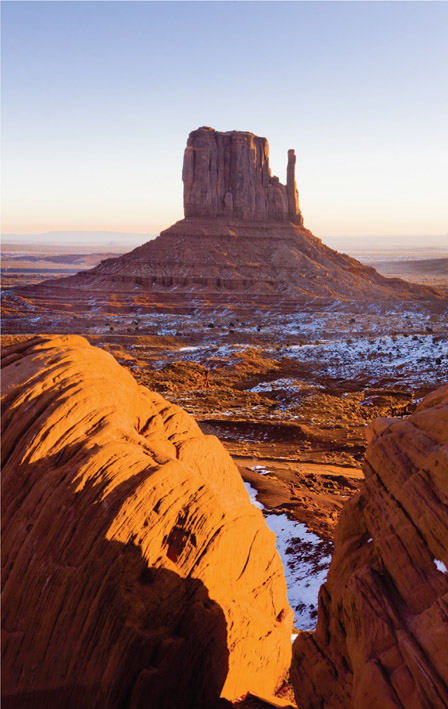2.2 Location pattern of the world’s biomes

The normal way of looking at this location pattern is to look at the change from the Equator to the Pole. For example, in Source 2.1, start with Africa and move to the North Pole along 10°E longitude.
DEVELOPING YOUR UNDERSTANDING 2.1
This examination shows the transition of biomes from the hot, wet rainforest of the tropics to the polar ice caps. The same biomes are found in different parts of the world. There is a pattern of biomes from north to south across the globe.
DEVELOPING YOUR UNDERSTANDING 2.2
- The class should be divided into four groups.
- Each group will be allocated one of the following lines. Identify the biomes along your line.
- The Panama Canal to the North Pole
- Singapore to the North Pole
- The Panama Canal through South America to the South Pole
- Singapore to the South Pole via Indonesia and Australia.
- Share your results with the other groups and determine if there were similarities in the changes in:
- the Northern Hemisphere profiles
- the Southern Hemisphere profiles.
- Share your results with the other groups and determine if there were differences in the changes in:
- the Northern Hemisphere profiles
- the Southern Hemisphere profiles.
- Discuss the following:
- If there were similar patterns observed in the northern and southern hemispheres, what factors could have caused these similarities? Equally, if there were differences, what might have caused them?
- Was there an anomaly in the pattern? (An anomaly is something which doesn’t fit the general pattern.)
- Which biomes are poorly represented in the Southern Hemisphere? Why is this so?
- Which biome is the anomaly? This is the biome that does not fit the pattern as it can be found in zones from the Equator to the poles. (This anomaly will be examined later.)
Climate and the location of the world’s biomes
There are many factors affecting the location of the world’s biomes but one factor stands out above any others: climate. The plant and animal communities of our world respond to variations in climate. It is their response to the variations in climate that give the world both this distinctive pattern of biomes and the pattern of changes in biomes as one moves from the Equator to either pole.
This relationship between vegetation and climate was recognised by Russian/German climatologist Wladimir Koppen when he was devising his world climate classifications between 1884 and 1936. His classification recognises that vegetation patterns are a reflection of climate patterns.
Source 2.3 Koppen’s world climate classification
Many of the names Koppen gave to his climate regions were based on vegetation terms – rainforest, savanna, desert, tundra. Other descriptors are more related to climate terms – perpetual frost, dry climates.
This raises the issue of how phenomena are classified. Vegetation areas should be named after vegetation terms. The classic example is ‘rainforest’, which is a climate zone named after a vegetation term.
The study of ecosystems in the previous chapter showed the important roles of temperature and rainfall in ecosystems. It should then be no surprise that climate is the major controlling factor in the distribution of biomes. It should not take too much thought to work out the other major controlling factor. Again, this factor is important in controlling ecosystems – people.
